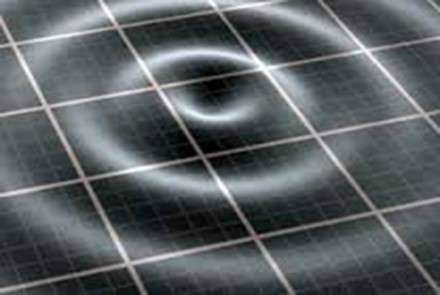(Phys.org) —When observing the bright explosion of a White Dwarf star in our neighbouring galaxy last year, researchers from The Australian National University collected the largest ever data set on what they recognised as one of our best 'standard candles' yet for distance measurements in the Universe.
"We know how a candle of a particular brightness grows fainter as it is moved further away from us. So, if we know the true brightness of the candle (in this instance, supernova SN 2012fr) and we measure its observed brightness, we can then calculate the interceding distance," said Dr Michael Childress.
Supernova SN 2012fr left a chemical fingerprint which has been analysed by a team of researchers led by Dr Childress from the ANU Research School of Astronomy and Astrophysics and which also includes Nobel Laureate Professor Brian Schmidt.
Their data shows unprecedented, and quite unusual, layering in the material that was burnt and ejected in the explosion, especially silicon and iron.
Two distinct layers of silicon were found: one thick, outer layer that had faded by the time the supernova reached its peak brightness on 12 November 2012 (16 days after the initial explosion), and one deeper layer that hardly changed for several weeks after the explosion.
"As it turns out, SN 2012fr is not just another supernova but a really interesting case. Since it was discovered within a day of explosion, we were able to study it in greater detail than almost any supernova ever discovered," Dr Childress said.
"Because we know the distance to its host galaxy (NGC 1365), this supernova actually lets us better calibrate all Type Ia Supernova observations to measure distances in the Universe, using what we call the 'standard candle' technique.
A short research presentation by Dr Childress.
Despite its unusual layers, SN 2012fr appears to still be classified as a so-called 'normal' Type Ia Supernova – which Professor Schmidt used in his Nobel Prize winning work to discover Dark Energy – and it also presents a key link in our cosmic distance ladder.
"Our analyses of SN 2012fr will increase the precision of which we can measure distances outside of our own galaxy, as well as improve our understanding of these explosive events and our ability to use them in the hunt for Dark Energy, the source of the accelerated expansion of the Universe," said Dr Childress.
This research is part of 'The Dark Universe' theme of the ARC Centre of Excellence for All-sky Astrophysics, CAASTRO (www.caastro.org) and is published today in The Astrophysical Journal.
Journal information: Astrophysical Journal
Provided by Australian National University
























